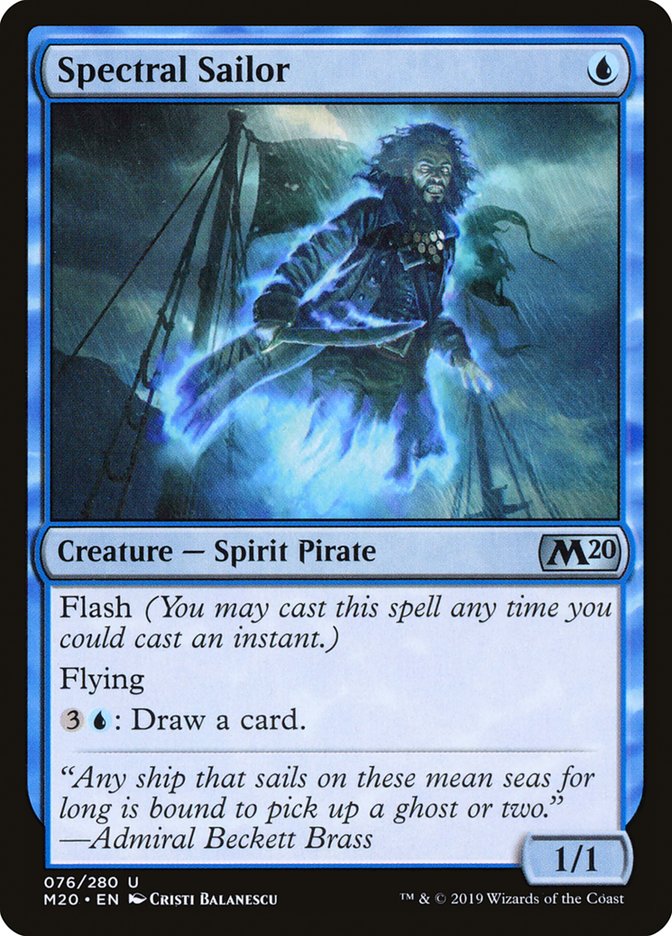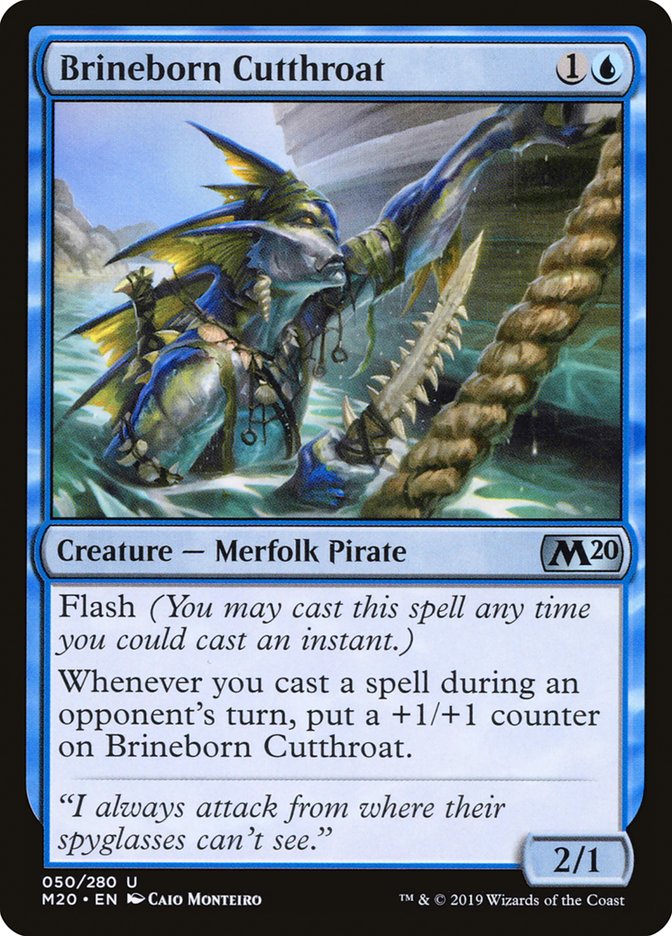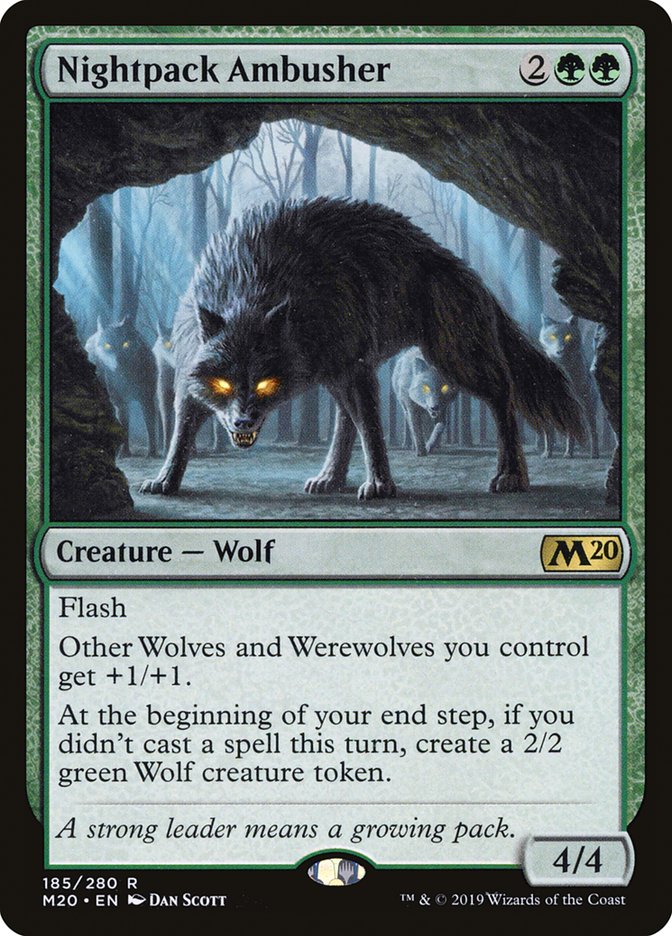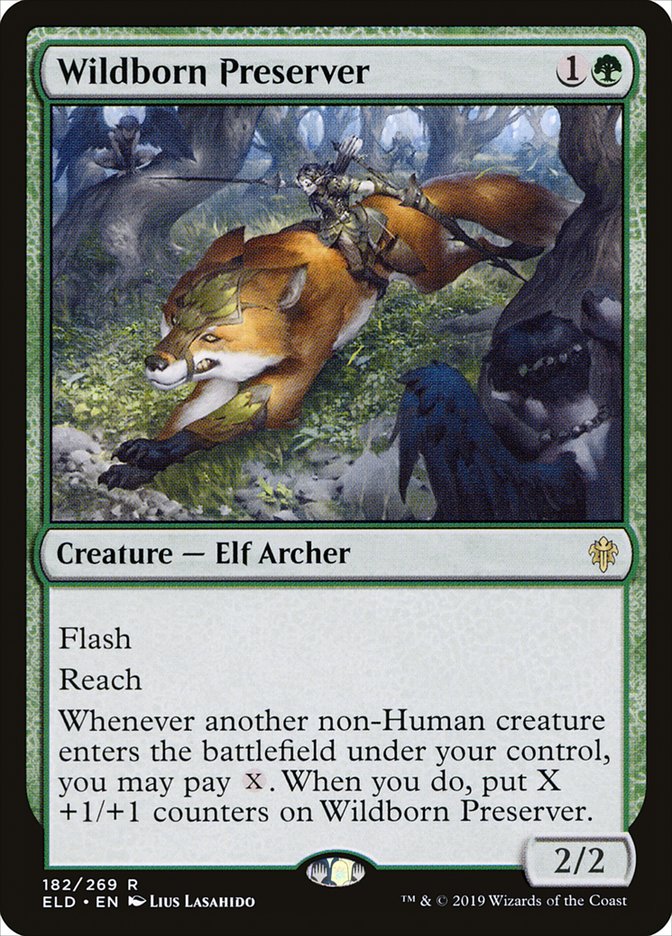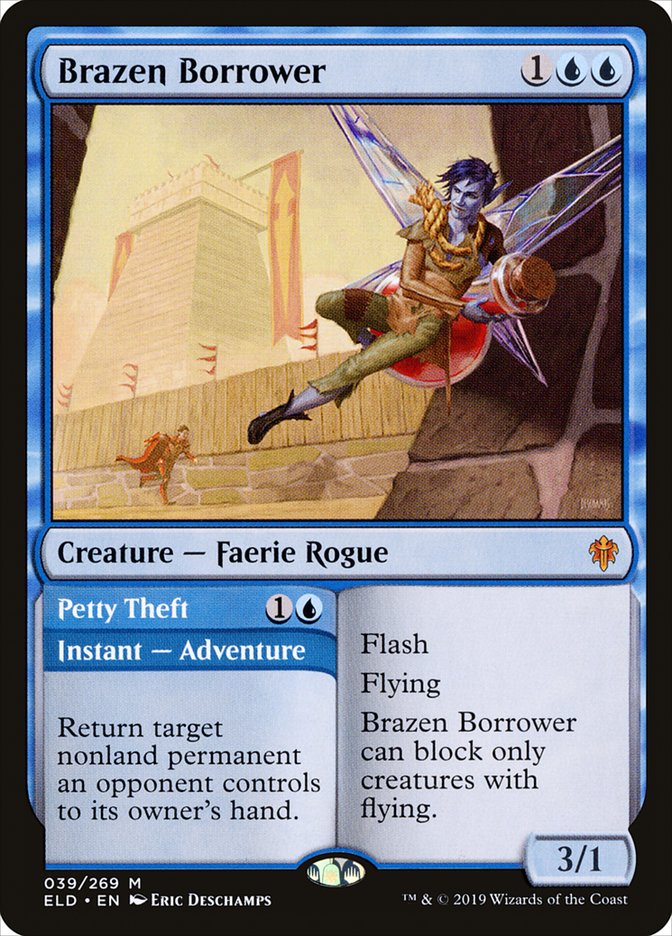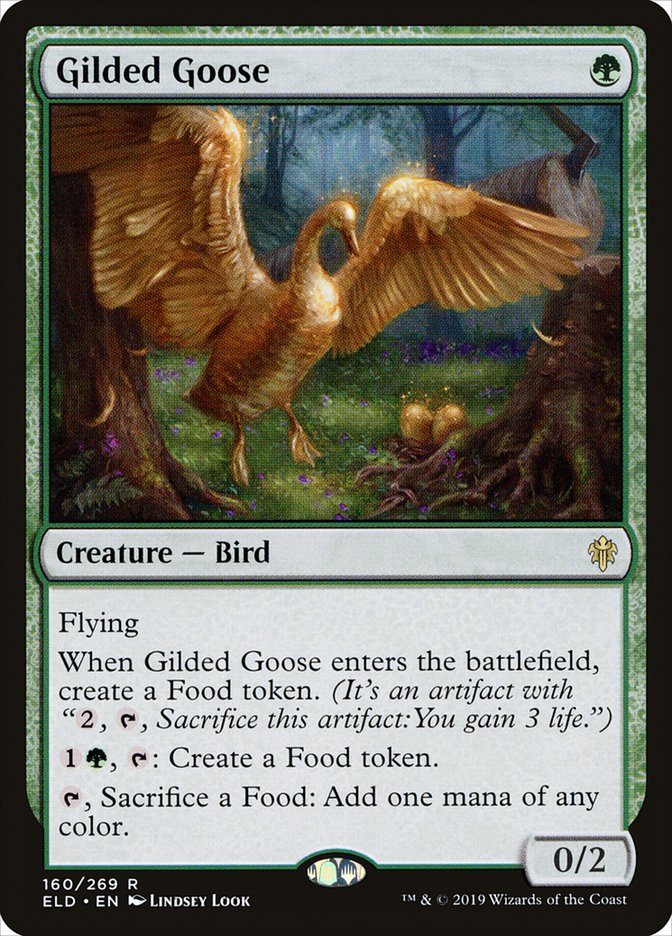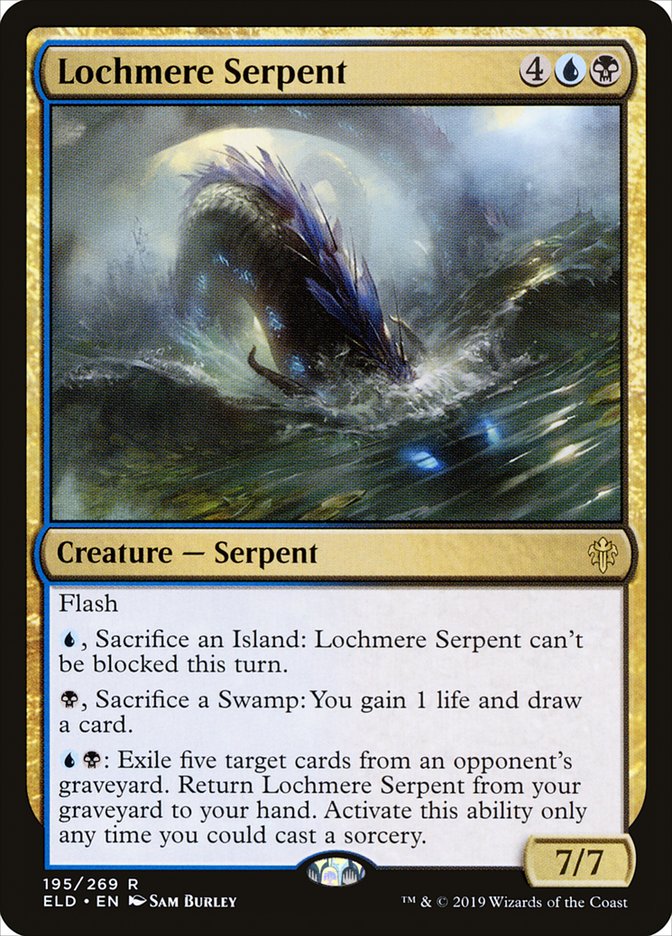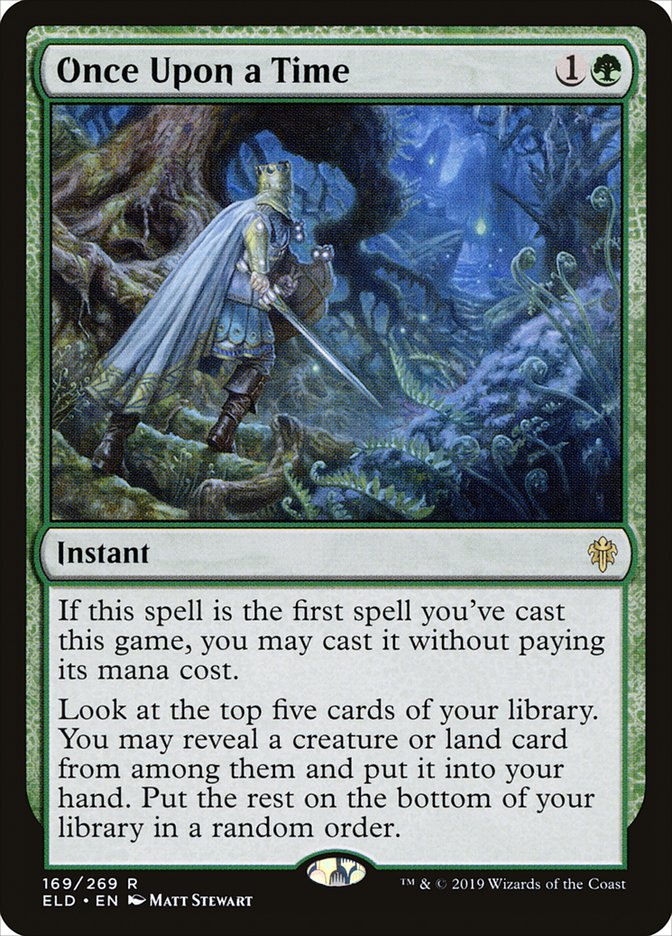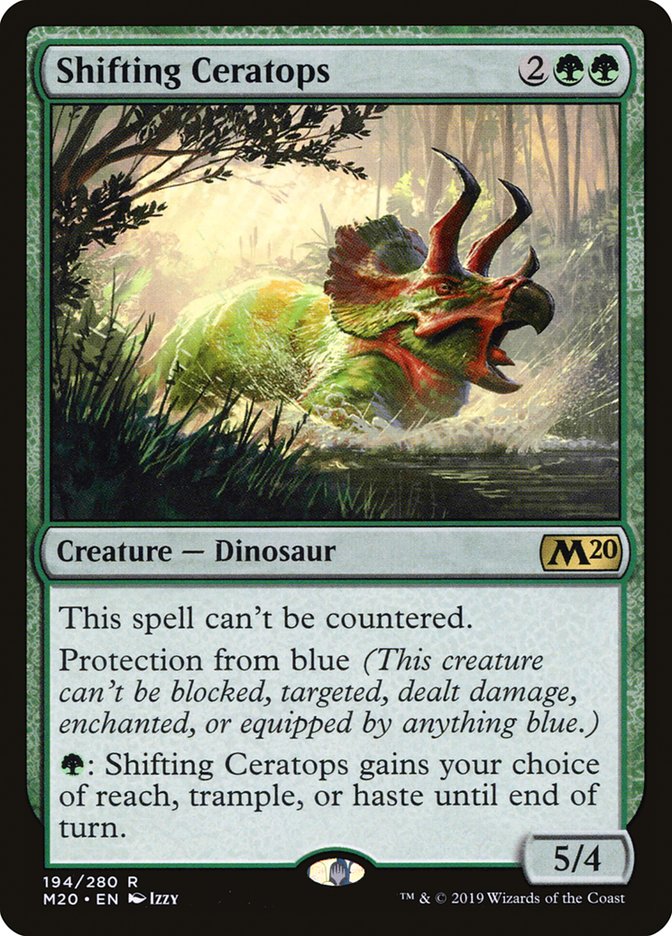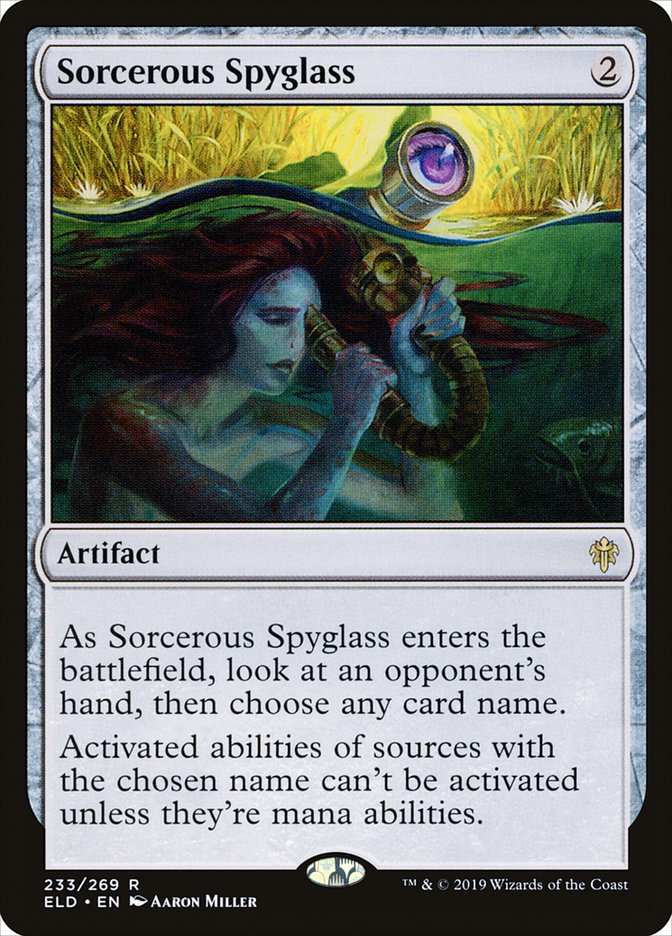The rotation removing Dominaria, Core Set 2019, and Ixalan block from Standard is finally upon us. In all the time I’ve been playing Magic I don’t think I can remember a more anticipated rotation. It’s possible this is skewed because social media makes all the opinions more visible, but I still think Standard had grown stale. Teferi, Hero of Dominaria and Goblin Chainwhirler were both ridiculously oppressive and unfun cards at times throughout their tenure in Standard. Mono-Red Aggro was way too good almost the entire time the deck was legal, and various Teferi-based control decks were also incredibly good.
Players are excited to try a wealth of new decks now that some of the “fun police” have said their goodbyes to Standard. New cards and decks are the most exciting part of a new format but equally important to the texture of the format is the legion of existing archetypes that showed promise but weren’t quite good enough.
One such archetype that showed serious promise but fell just short in the previous format was the relatively new Simic-based Flash deck. The release of Core Set 2020 brought with it a solid package of competitively costed flash creatures.
These three creatures, along with Frilled Mystic and Merfolk Trickster, formed the threat base of the deck. This deck saw some minor success in the early days of Core Set 2020 Standard, particularly at the SCG Worcester Standard event. SCG Tour regular Austin Collins had finished 5-0 in an Magic Online League with the list and was championing the strategy early on. I played the deck myself to a Top 32 finish at SCG Worcester.
It had a lot of positive things going for it but also had some serious issues. A deck like this one is often rather strong in an early format because it can catch opponents seriously off-guard. It’s tough to sequence when your opponents have a variety of instant-speed threats as well as a diverse suite of counterspells.
The problems the deck encountered mostly revolved around awkward double-colored cards with less than perfect mana as well as not having access to any good removal spells since you were in blue and green. Oh, and also, this card proved to be a complete and total pain:
Just when we thought the oppressive Teferi was about to rotate, it became obvious that the smaller version was every bit as powerful and format-defining, albeit not in the same ways.
The deck evolved, though, even in the face of a rough Teferi matchup. I tried to update it and I even wrote about some changes a few months back. I took a version I found online into battle at SCG Philadelphia in the Standard seat. We fell short of the second day; however, that left me to play the Standard Classic with my Sultai Flash brew. I lost my win-and-in to eventual champion Cain Rianhard and his stellar Bant Ramp deck, and I abandoned the Sultai Flash deck after Bant Ramp and Scapeshift grew in popularity because there was an incredibly high density of Teferi, Time Raveler amongst the top tier of Standard decks. Before I left off with the deck, it looked something like this:
Creatures (18)
Lands (24)
Spells (18)
- 2 Opt
- 2 Negate
- 3 Essence Scatter
- 1 Disfigure
- 4 Lookout's Dispersal
- 2 Cast Down
- 2 Assassin's Trophy
- 2 Tyrant's Scorn
Sideboard

Noxious Grasp goes a long way towards combating some of the more problematic things you face, whether Teferi; Nissa, Who Shakes the World; or Shifting Ceratops. You can also kill a huge Hydroid Krasis. Now, I still think Sultai is likely the best option for flash going forward. However, we have a full new set in Throne of Eldraine which offers us a bunch of intriguing new cards. We also have some rotated cards that we need to replace. Let’s break down some of our new options.
These are the two premier flash threats from Throne of Eldraine that are shoe-ins for inclusion in the archetype. There’s a six-mana creature that’s also intriguing, but we’ll get to that one a bit later.
Wildborn Preserver is a great mana sink that also provides a bit of reach in the late-game. It’s important for a flash deck to have a two-drop that scales well because you’re operating with open mana so often. It’s very valuable to be able to convert that open mana into a bigger threat. Preserver is one of the better creatures to cast in response to a Teferi, Time Raveler because, if you have a Sailor or any other creature on the battlefield, you can dissuade the opponent from getting a free bounce draw.
This works with any two-drop, of course, but Wildborn Preserver is especially intriguing in regards to this dynamic; when the opponent is forced to tick their Teferi up, Preserver can deal a significant amount of damage if you simply main-phase a creature and sink the remaining mana into it. Additional one-drops make Preserver better while also allowing you to double-spell more reliably.
Before we delve into other cheap creatures that could find their way into the list, let’s take a look at Brazen Borrower. Brazen Borrower is another card that has a ton of utility with the rest of the flash shell. It affords you a ton of luxury to work with your counterspells. You can send a problematic permanent back on Turn 2, only to untap on Turn 3, with the option to counter their play or deploy a threat to maintain initiative. A three-mana, three-power flying threat is especially intriguing because it can force action from the opponent. The fact that you can double-spell on Turn 5 makes your Brineborn Cutthroat slightly more intimidating while also allowing you to clear the way for your battlefield of flashy threats.
The sequencing with Nightpack Ambusher and Brazen Borrower is also nice. You can stick your Ambusher and untap and pass with five mana up. Then you can save your Ambusher from any sorcery-speed threats and simultaneously deploy a relatively scary flying threat to maintain hold on the tempo of the game. Your opponent now has to handle the Borrower as well as the second coming of your Nightpack Ambusher.
The nature of flash decks is such that when you fall behind you can struggle to catch up on the battlefield. Your deck’s function is predicated on garnering some sort of value from your counterspells. The Adventure half of Brazen Borrower allows you to keep the battlefield relatively clear and manageable. This works wonders towards letting you counter something relevant. The clear battlefield means your instant speed threats will quickly pull you ahead. To combat this, your opponent has to cast things, and then you can maximize the value of your counters. That’s the general idea behind flash decks and Brazen Borrower is one of the strongest enablers for this strategy that we’ve seen in quite some time.
Part of the way flash decks win is by getting ahead in the early-game. This makes the counters and the threats better in the ways we’ve previously discussed. A mana creature is often a tough sell in flash strategies because they so frequently take a reactive role and are often spell-heavy. You’re not generally in the market for a mana creature because it’s considered a drawback to allow the opponent to trade favorably with their removal spells. You’re so inclined to be working towards controlling the tempo of the game that letting them Bolt your Bird can be a rough exchange for the flash deck. I think there are exceptions, though. A mana creature that is also a mana sink and provides lifegain is certainly intriguing.
The goose is loose. I repeat, loose! This card is going to be terrifyingly ubiquitous for the next several months. Playing a mana creature like Paradise Druid or Leafkin Druid is out of the question because you need to have available mana as early as Turn 2. Turn 1, however, is a different story. The opportunity cost to taking Turn 1 off for a mana creature is Spectral Sailor and that’s it. Also, you can double-spell on the following turn, so that’s not even a real drawback.
The fact that Nightpack Ambusher can get onto the battlefield a turn earlier is a huge boon for the deck. Ambusher is the best card for your strategy, and landing it on Turn 3 without having to jump through hoops is just, well, really good. The ability to replenish your Food tokens to gain life or accelerate mana on later turns is nice utility for a card that also functions as a mana creature. It’s especially nice when you’re operating on the opponent’s turn and playing with counterspells because it affords you the option to use your mana when you didn’t want to or weren’t able to counter something. Decks full of counters and tricky creatures can struggle with aggressive decks, so the lifegain can also help, provided that you have time to spend the mana.
One last card that gets a boost from the Gilded Goose is Frilled Mystic. We mentioned the counterspells earlier, but Mystic is especially important because it is slow and clunky. Getting the opportunity to use it a turn earlier is nice because the opponent is trying to get ahead on the battlefield and maneuver into a spot where your Frilled Mystic is stuck in your hand while they’re beating you down.
Three abilities, 50 words in the rules text box, on sale at Star City Games for about $3.50! I think this card might be worth a whole lot more, though. It’s one of the better closing threats I’ve seen in a while and flash is a nice ability on something so expensive because it helps to ensure that you don’t get blown out by some two- or three-mana removal spell. The Serpent wipes out almost every planeswalker in Standard with a single hit. You can cash in an extra land to make sure it can’t be blocked and can also trade a land for a card to ensure you get some value if your Lochmere Serpent dies.
From a theoretical perspective this card is good in context right now. A lot of the prospective best decks are green-based midrange piles with minimal removal. Such decks often present too many threats for flash to answer. This is aided, of course, by Hydroid Krasis and the absurd card advantage engine it provides. Nightpack Ambusher goes a long way towards beating random green cards.
Once planeswalkers like Oko, Thief of Crowns and Nissa, Who Shakes the World start clogging things up, it’s rather exciting to have an unblockable threat that can kill planeswalkers and close the game out eventually. Playing more than one seems like a dangerous gambit, since this type of deck can’t really afford to have too many dead cards in hand at any given time, but the next card on the list really helps us get value from playing one-ofs.
This card is totally broken in Modern. Fortunately, we’re talking about Standard today. Standard is much more fair, but I still think every green deck will play a few copies of Once Upon a Time. This card is especially good in our flash deck because we can cast it for free and look for our Gilded Goose or a two-drop on Turn 1. Also, later on we can use it to search for our high-impact four-drops or the land needed to cast them.
Flash really wants to play enough lands to hit the first four or five land drops but can’t usually afford to play many sources of raw card advantage. Once Upon a Time is perfect here because it finds lands early and threats later and can be hard-cast at instant speed so it doesn’t come at the cost of untapped mana. As I mentioned earlier, it also allows us to play one-ofs and still regularly see them have an impact.
Readers: “Can we get a decklist?”
Daddy: “Yes, yes, you may!”
Creatures (25)
- 3 Frilled Mystic
- 3 Spectral Sailor
- 4 Nightpack Ambusher
- 4 Brineborn Cutthroat
- 4 Gilded Goose
- 1 Lochmere Serpent
- 3 Wildborn Preserver
- 3 Brazen Borrower
Lands (24)
Spells (11)

If you’re wondering about the Mystical Disputes in the maindeck, I can explain. Oko, Thief of Crowns and Teferi, Time Raveler are both great three-drops and are both rather good against our deck. The card is countering things that cost three or more on Turns 3, 4, and 5. If the opponent has blue cards, you’ll be able to occasionally break serve and gain a huge amount of tempo when you counter their Turn 2 Oko or Teferi. It’s like having a Spell Pierce for the worst-case scenario and being able to use it on a creature (or spell) later on.
I think this is a reasonable innovation for the first week because a slow Mana Leak isn’t completely awful when you have Gilded Goose and a bunch of other things to do with three open mana. Occasionally it’ll be a one-mana Mana Leak and you’ll be able to double-spell on a crucial turn.
The sideboard is pretty self-explanatory. Shifting Ceratops might be bad but it helps with Teferi, Oko, and Narset, Parter of Veils. Ceratops helps get aggressive when needed, which is good because your deck appears to be mostly reactive. You can catch some opponents off-guard with a huge hasty creature if they expected a bunch of cheap spells and tricks. Sorcerous Spyglass is a concession to Oko, and to a lesser extent Teferi, though I’m trying to keep Teferi off the board entirely. Kraul Harpooner is going to annihilate an opposing Gilded Goose and lead to a screenshot on Twitter in the next few weeks, guaranteed!
That’s all for this week. I imagine the best Sultai Flash deck will ultimately look a little different from this one. However, this is a great place to start, and if I were attending SCG Philadelphia I would be playing something similar. Good luck this weekend! I can’t wait to see what decks everyone comes up with.


